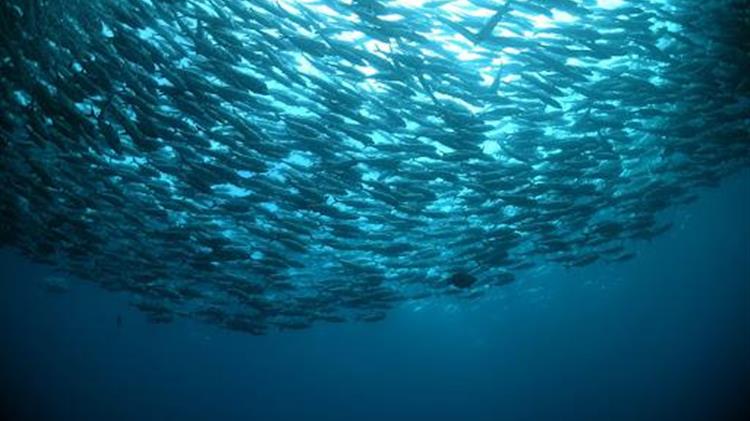A ground-breaking new study published today, 8 February 2024, has revealed for the first time both the enormous number of fishes caught from the wild each year and the astonishingly high proportion of these used for fishmeal and oil, which are mostly fed to farmed animals rather than people.
Published today in the journal Animal Welfare, Estimating global numbers of fishes caught from the wild annually from 2000 to 2019 is the first peer reviewed study to estimate the scale of wild-caught fishing as well as the huge welfare impacts of modern fishery practices. It cites evidence that, although the sentience of fish is widely accepted, wild-caught fishes are generally killed without stunning and suffer very poor welfare for extended periods both during and after capture.
Co-authored by Compassion in World Farming Research Manager, Phil Brooke, and lead author, Alison Mood of Fishcount, the study reveals that:
- an astounding 1.1 to 2.2 trillion* individual wild fishes are caught globally each year
- wild-caught fishes represent 87% of all vertebrate animals reported to be used for food or animal feed in 2019 (calculated from FAO statistics)
- shockingly, around half of all fishes caught – between 490 and 1,100 billion** mainly small individuals – are used for reduction to fishmeal and oil, which are mostly fed to farmed animals rather than people
- small fish play a vital role near the base of the marine food web. Setting catch limits designed to protect the wider ecosystem could reduce the number of small fishes caught and decrease total captures by between 150 and 330 billion fishes.
The study highlights industry data showing that 70% of fishmeal and 73% of fish oil is used in aquaculture to feed farmed fish and crustaceans***. It goes on to recommend the development of gentler catching practices including humane slaughter together with the adoption of policies to reduce numbers of fishes caught that would benefit both conservation and fish welfare.
Phil Brooke commented: "Our latest Fishcount study sheds light on the staggering numbers of wild fishes caught annually with ethical implications for both fishery and fish farming practices. Firstly, the welfare of wild-caught fishes both during and after capture is very poor. Each individual fish – large or small – can feel pain, just like other animals, yet they suffer very poor welfare during capture and are killed without stunning. This must be urgently addressed.
"Secondly, the sheer scale of the use of small yet sentient fishes to feed farmed animals, mostly farmed fish, is another powerful argument for catching fewer fishes for reduction to fishmeal and oil. It would be much more efficient – and would benefit animals, people, and our planet – if we left more of them in the sea and most of those still caught were fed to people."
Compassion in World Farming has long argued that a sustainable aquaculture sector would farm lower in the food chain and would not be dependent on fishmeal and oil from purpose-caught wild fish. Over 90% of assessed wild fish 'stocks' are overfished or fished at their maximum yields and aquaculture is often heralded as a solution. However, a large proportion of modern fish farms produce carnivorous fish – like salmon, trout or tuna. These are mostly in intensive systems where they are fed a diet containing wild-caught fish, contributing directly to the strain on wild populations.
An estimated 440 wild-caught fishes are required to rear a single farmed salmon and approximately 90% of the wild fish used in feeds could be fed directly to people. This is inefficient – fed to salmon, only 28% of this high-quality protein ends up in human food. This can negatively impact food security, often in already vulnerable communities.
Last year, the animal welfare and environmental NGO launched a new report, Rethinking Aquaculture: for people, animals and the planet, highlighting the need to move away from intensive fish production towards farming lower in the food chain to help improve animal welfare, reduce pollution, lower antibiotic use and create a more sustainable industry.
In February 2023, a first Fishcount study called Estimating global numbers of farmed fishes killed for food annually from 1990 to 2019 showed that the number of farmed fishes slaughtered globally has risen dramatically – from 61 billion fishes in 2007 to 124 billion in 2019. This study, published in the journal Animal Welfare, was also co-authored by Phil Brooke and lead author Alison Mood.
Ακολουθήστε το Agrocapital.gr στο Google News και μάθετε πρώτοι τις ειδήσεις
